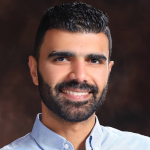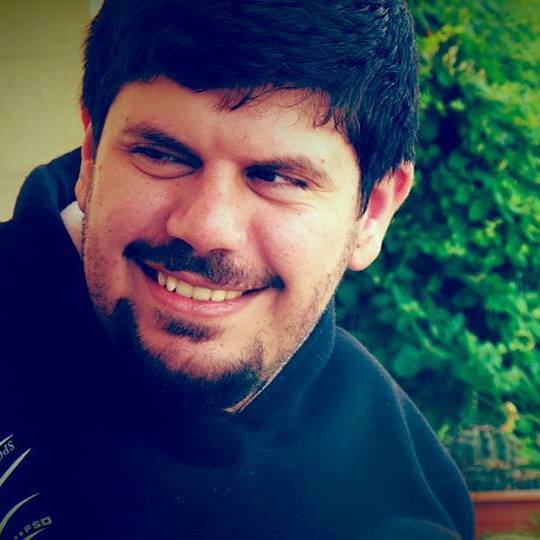Awareness of mainstream Western media's bias in favor of Israel and its support for Western expansionist projects did not begin on October 7th of last year. However, what has become glaringly evident is the extent of this bias, which has been noted for decades and has grown in direct proportion to the violations committed by Israel. After a year of war, this blatant behavior persists and continues to evolve, with a full and systematic commitment to the Israeli narrative. Two prominent examples of this bias have recently emerged in the context of the first anniversary of October 7, one from Reuters and the other from The New York Times.
Reuters: "Pain and Politics”
On October 5th, Reuters released a podcast episode marking the first anniversary of what has become known in the Arab world as "Operation Al-Aqsa Flood." The episode was titled, " October 7: The ongoing pain and the politics", which was presented within a highly specific and precise framing. The written description of the episode reads: " One year after Hamas' surprise attack, we speak with women in Israel and Gaza about their ongoing anguish." The episode begins with a dramatic journalistic narrative about the last messages an Israeli mother received from her son before he was kidnapped and taken hostage to Gaza. This woman, "Einav," is at this point familiar to Reuters listeners, and her son is "Matan."
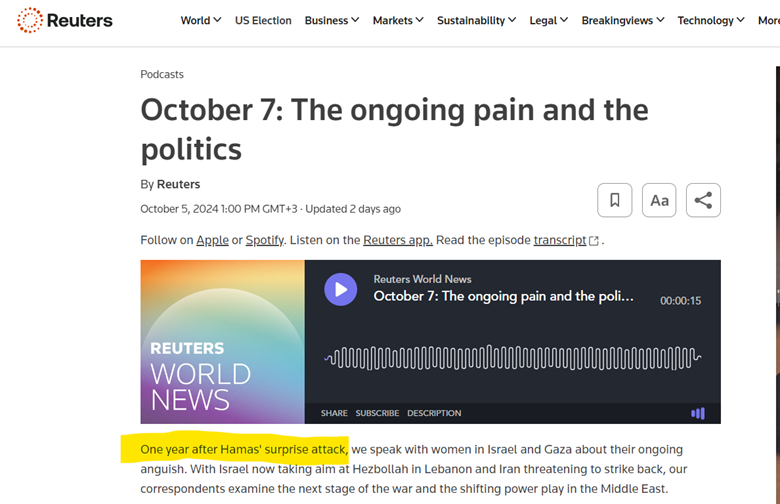
In contrast to the vivid, detailed drama of the first segment of the episode, we only hear a faint, secondary mention of a mere "another woman", whose pain Reuters seems to only acknowledge through the lens of the Israeli mother and her tragedy with her son. This is what the episode literally says before diving into the details of this “other” woman’s suffering, narrated by Reuters correspondent in occupied Jerusalem, Maayan Lubell, who recounts the story of the primary victim in the episode’s first and longest segment.
In contrast to the vivid, detailed drama of the first segment of the episode, we only hear a faint, secondary mention of a mere "another woman", whose pain Reuters seems to only acknowledge through the lens of the Israeli mother and her tragedy with her son.
Listeners will have to wait several minutes before hearing the opposite side of the story and discovering the identity of the other victim. She is Inas Abu Muammar, whose image went viral from the Nasser hospital as she buried her face in the shroud of her niece, Sally, who was killed in an Israeli airstrike during the early days of the war on Gaza. In the podcast, her story is framed as follows: "It has become one of the most vivid images of Palestinian suffering during the yearlong bombing of Gaza, Israel's response to Hamas's October 7th attack." This framing leaves the door open for listeners to ponder on whether the death of the young girl was a justified cost, given that it occurred within the context of pursuing the attackers who initiated the violence, according to the narrative established at the start of the episode.
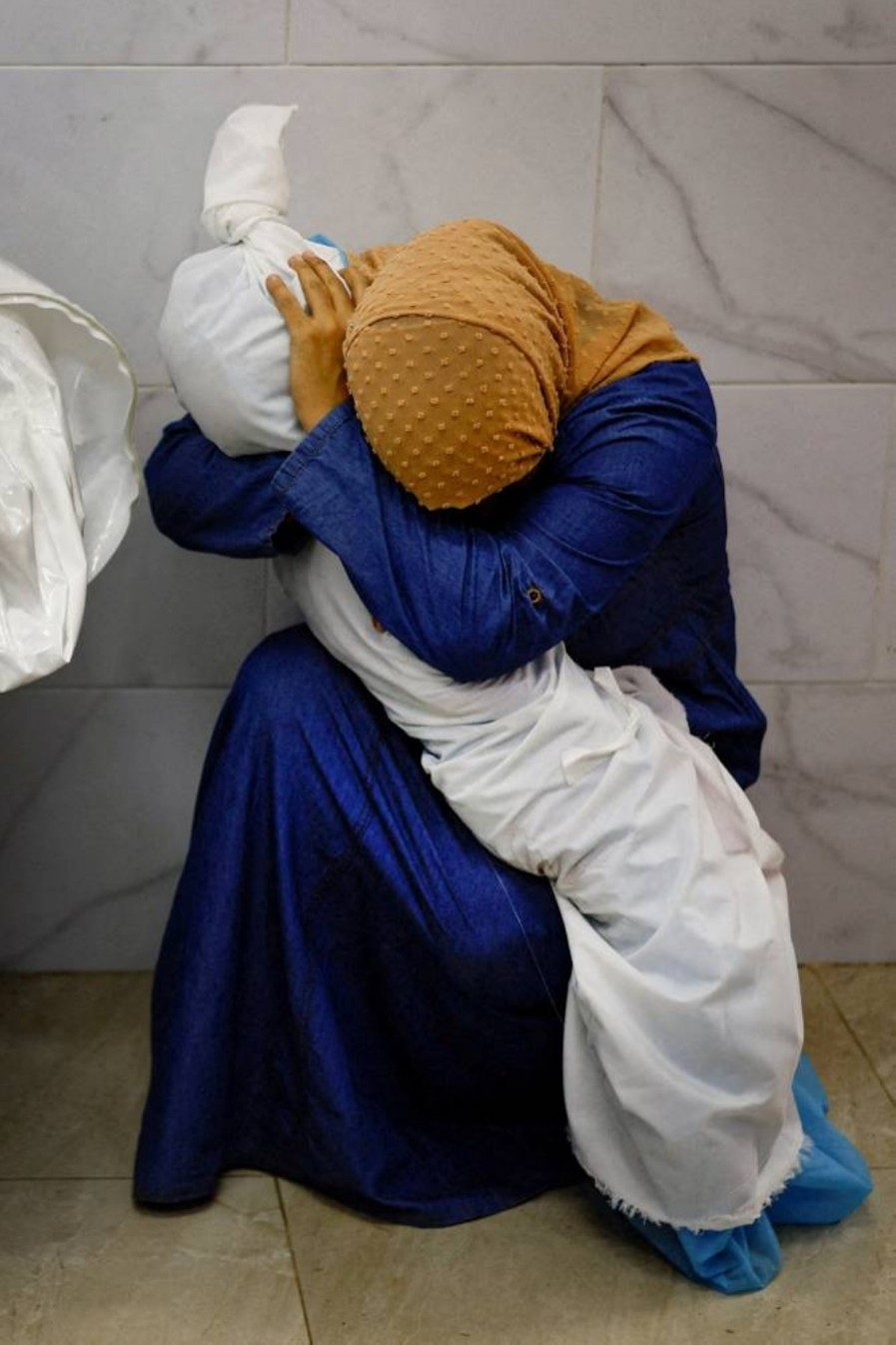
The selection of that specific image, despite its horror, also reveals the lens through which Western media views Palestinians: distant, unfamiliar, and obscured. They are voiceless—either unable or perhaps forbidden from speaking and being authentically represented. In contrast, the listener constructs an image of the Israeli mother not only as a victim of a horrific experience indeed, but also as a "cultural" figure, portrayed in a stereotypical and biased manner. She has a voice, as she is actively " speaking out", and has an agency, as she is " blocking roads and bonfires on roads and chaining herself to fences". Contrastingly, the Palestinian woman is made faceless, silenced, and only allowed a voice within certain perceptual views or stereotypes.
Reuters' insistence on framing the context in such a distorted and dehumanizing way appears almost obsessive, even when addressing a tragic human story in a “both-sided” manner. The full extent of this professional and ethical shortcoming becomes more apparent when considering the agency's—and other dominant Western media outlets'—deliberate omission of the broader context preceding and surrounding the October 7th attacks. This well-documented and long-standing reality is one of occupation, blockade, and a brutal collective punishment imposed on the residents of Gaza—a territory described by major global humanitarian organizations as the world’s largest open-air prison, before it transformed into a “graveyard for children”, as UNICEF has recently noted.
In addition to this selective framing, the podcast employs editorial techniques that minimize Israeli accountability for the crimes committed against civilians in Gaza. For example, Sally, the young girl, "was killed with her mother," and her aunt Inas "returned to her badly damaged home." These passive constructions, which omit any direct reference to the perpetrators, are repeated throughout, while the refrain "a year after the October 7th attacks" is consistently emphasized. It feels as though the editor is either preemptively shielding themselves from Israeli scrutiny or naturally aligning with the Israeli narrative, blatantly abandoning even the pretense of transparency and objectivity—qualities the agency traditionally claims as part of its professional ethos.
In addition to the selective framing, the podcast employs editorial techniques that minimize Israeli accountability for the crimes committed against civilians in Gaza.
The New York Times: "The War That Never Ends!"
In a similar vein, The New York Times began its main report on the anniversary of the Gaza war by highlighting a human-interest story about an Israeli man who fled his home on October 7th after "terrorists from Gaza invaded southern Israel." The report then transitions to the story of a Palestinian man who also fled his home after " after the Israeli Air Force "responded" by striking his city in northern Gaza."
This unfolds in a war described as the longest "between Israelis and Arabs," as the report phrases it. Here, the language borrows from official Israeli political and historical terminology, referring to Palestinians merely as "Arabs"—stripping them of any claim to the land, and suggesting that any displacement, if it occurs, is simply the relocation of "Arabs" to neighboring Arab countries.
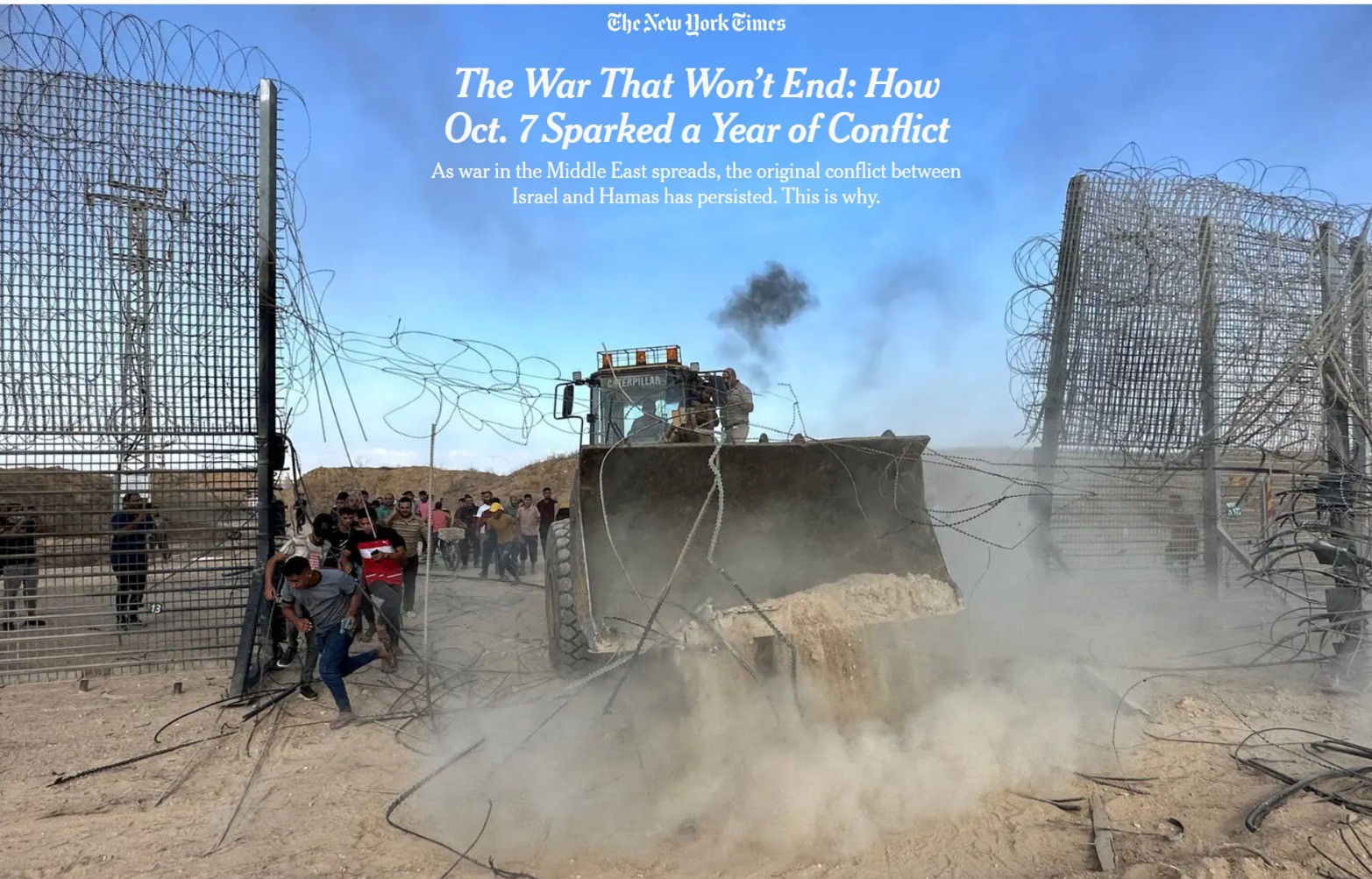
The report came with a striking headline that frames the entire event: "The War That Won’t End: How October 7th Sparked a Year of Conflict." The body of the report attempts to create an illusion of balanced objectivity between the two sides, ignoring the context of occupation in its entirety, and falling into misleading rhetoric that suggests Palestinian attacks are "pure terrorism," as if they occurred in a vacuum. Moreover, The report presents the war as one between two equally matched forces in terms of power, capabilities, and rights.
However, António Guterres, the UN Secretary-General, made it clear nearly a month after Israel declared its devastating war on the besieged Gaza Strip, which has been under blockade for nearly two decades, that "it is important to recognize that Hamas’ attacks did not happen in a vacuum, and these attacks do not justify Israel’s collective punishment that Gaza is witnessing." Yet even this basic acknowledgment of objective truth is absent from The New York Times report.
The selection of a human-interest story featuring a victim from each side during the second year of Gaza’s ongoing genocide also comes at the expense of crucial facts and figures. For example, The New York Times failed to mention that since October 7th, “over 75,000 tons of explosives have been dropped on Gaza, and that 31 out of 36 hospitals have been destroyed by Israeli forces, and two-thirds of Gaza’s residential buildings have been leveled by Israeli attacks. The report ignores the details of the staggering death toll of children, which nears 17,000, including 171 infants. There is also no mention of the 11,500 Palestinian women killed during the war. Even the more than 175 journalists killed by Israel in Gaza are not considered a significant loss in this Times report, and thus lefts unmentioned.
One of the most critical omissions that Western media outlets, including The New York Times, consistently make in their coverage of the war on Gaza is the failure to state that the Gaza Strip is fully occupied and subject to a long and crippling siege. Seventy percent of the population of Gaza are refugees, expelled from their lands and villages during the Nakba. This foundational objective truth about Gaza, a mere part of the larger Palestinian territories occupied since 1967, is ignored by The New York Times.
Since October 7th, Israel’s propaganda machine has been relentless in justifying its all-out war on Palestinians. Meanwhile, major Western media outlets have provided more nuanced and pseudo-professional support for this propaganda, portraying Israel's crimes in Gaza either as a "response" to October 7, or by downplaying their severity and avoiding any moral judgment, unlike the approach they adopt in coverage of the Palestinian attacks. This synchronization between official propaganda and the mainstream globalized media reinforces what Daya Thussu, the professor of International Communication at the University of Westminster in London calls “shadows of dominant powers". These media outlets, according to Thussu, function within a system of editorial and epistemic priorities that shape and control global discourse to serve their interests, crafting a narrative that values human life in a racially unequal manner. According to this narrative, there is one "true" victim, worthy of unconditional grieve, while all other casualties are mere collateral damage, sacrificed in the process of eliminating "terrorists" and "militants"—even if it means erasing an entire population and annihilating any future for them, as is the case in Palestine today.
Reference
1) Thussu, Daya Kishan. De-colonizing Global News Flows: A Historical Perspective, pg2
